Star jasmine (Trachelospermum jasminoides) is a highly popular vine that responds well when cut back to manage its size and spread, or to encourage branching for denser growth.
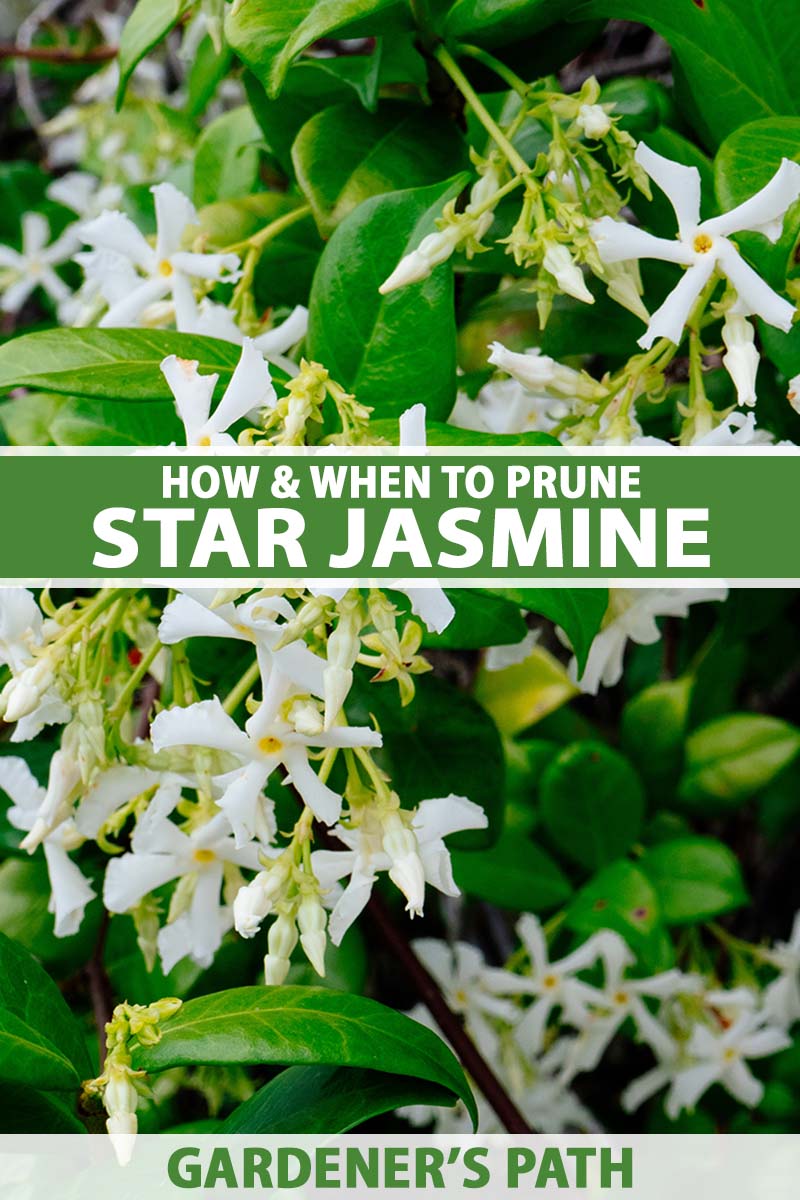
We link to vendors to help you find relevant products. If you buy from one of our links, we may earn a commission.
These showy vines are loved for their masses of fragrant, starry white flowers, with glossy, evergreen leaves, and lush growth.
But for the first few years, they’re slow growing and pruning isn’t required.
After they’re well established, growth is steady and vigorous, although it’s not rampant.
Generally well-behaved, an annual or biannual trim or light cutback can help to enhance blooming by encouraging branching and bushiness, and this helps to maintain an appealing shape and size.
Cutting vines back hard is typically only needed to rejuvenate old, overgrown, or neglected plants.
A twining perennial in areas with mild winters, these easy-care vines are resilient and quickly recover from cutting back, spreading freely once more!
So if it’s time to reshape, resize, or revitalize your T. jasminoides, let’s get into how and when to cut back star jasmine.
Here’s the lowdown on what’s ahead:
What You’ll Learn
Tools for the Job
The growing tips of star jasmine remain fairly small and are easily cut with clean, sharp garden shears, extension loppers, or hedge trimmers.

Manual cutting is the preferred method of pruning, but for large swaths of vines and foliage – like a ground cover – using hand tools can quickly become labor intensive and tedious.
For big jobs, an electric hedge trimmer or a string trimmer is the way to go.
And for lofty spots, an extendable pruner is a handy alternative to climbing up ladders – something I’m not crazy about.
My preference is a three-in-one extension tool that can be used for sawing or pruning, and with your own height added in, it extends close to 20 feet.
Try this sturdy, Italian-made pole pruner/saw. It has a reach of five to 14 feet and is available at Garrett Wade.
Mature vines can develop thick, woody main stems with a diameter of two or three inches.
For hard pruning, a garden saw can be useful, or even a small chainsaw if you have multiple large stems to tend to.
I recently picked up a six-inch mini chainsaw to cut back an old, tangled apple tree. It was so fast and easy, I’m stunned it took me this long to get one!
You can find a six-inch chainsaw from Hyper Tough via Walmart. This model ships with a battery and charger.
When shopping, be sure to look for deals that include a battery (and a spare), charger, an extra chain, and accessories like safety glasses.
Also, gloves and long sleeves should be worn when pruning these vines, as T. jasminoides secretes a sticky milky sap when cut, which can cause skin irritation for some folks.
And please use safety goggles as well, particularly if you go the chainsaw route.
Time It Right
This beautiful evergreen is hardy in USDA Zones 8 to 10, but even in mild climates, growth slows over winter.
Growth is revived with the arrival of spring, and flowering takes place in late spring to early summer, depending on your location.
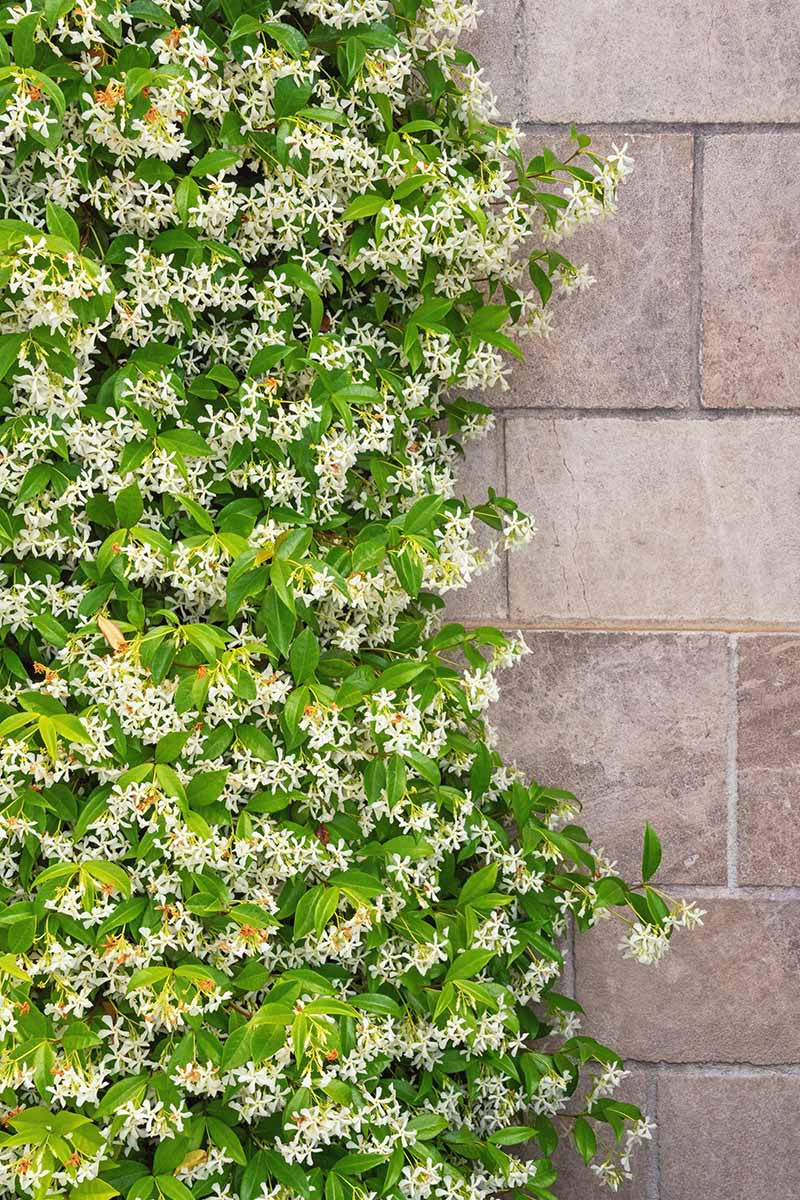
For established plants, cutting back is done at the end of winter to very early spring, or they can be pruned right after flowering – this too depends on your location.
If you’re in the warm end of their hardiness range and enjoy a long growing season, cut back once flowering is finished. But don’t leave it until too late – trimming should be completed by midsummer for plants to recover before cool weather arrives.
For areas in the cooler end of their cold tolerance, cutting back in early spring is recommended to give plants a full season to recover, form new growth, set flower buds, and prepare for winter.
When needed, a hard prune can also be done either in very early spring, or in summer after flowering. But keep in mind that flowers develop on short lateral stems sprouting from old wood.
If you hard prune early, you’ll miss out on most of this year’s flowers.
Hard prune in very early spring if the vines are no longer producing flowers. If they’re still floriferous, enjoy the perfumed blossoms first, then cut back hard in early summer once the flowers have faded and turned brown.
Trim Lightly for Maintenance
To maintain your plants’ health, size, and shape, remove stems that are congested, damaged, tangled, or weak, and head back last year’s growth at the same time.
Use clean, sharp hedge trimmers, loppers, or garden shears to cut back stems by a few inches to as much as one-third, making a diagonal cut just above a set of buds or leaves.
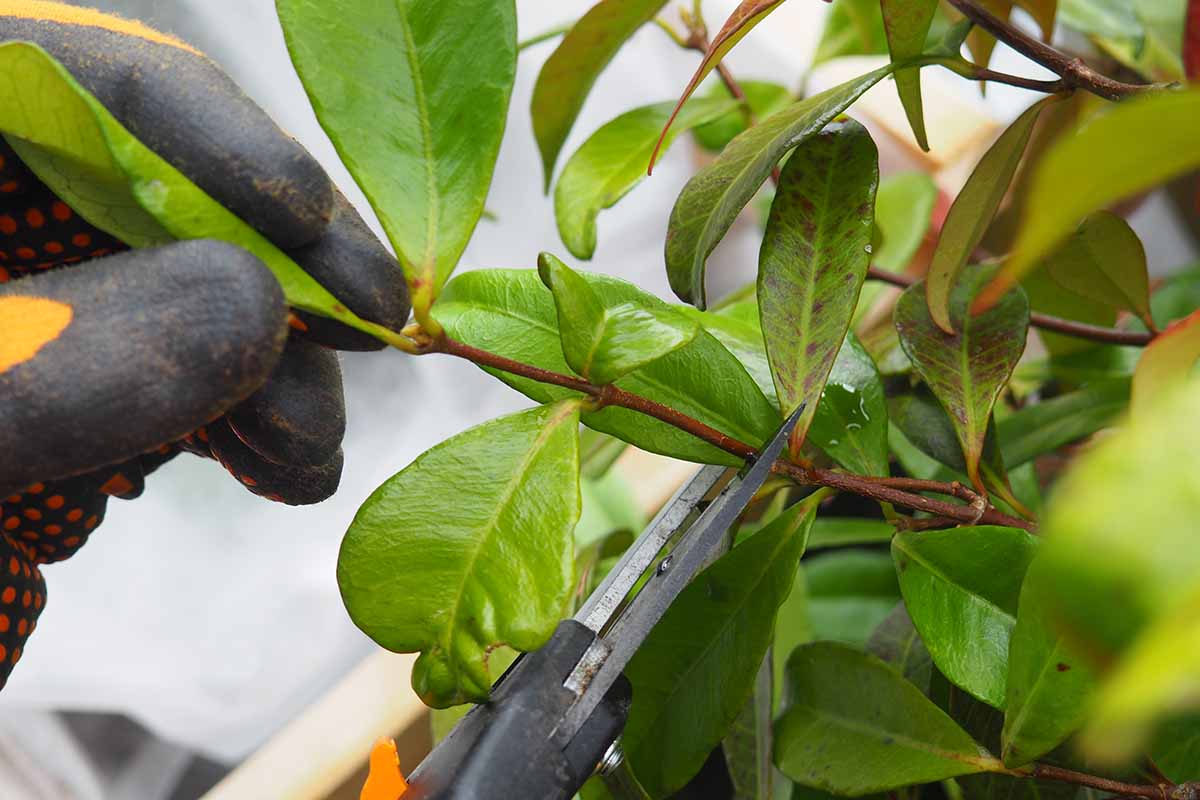
For climbing vines, start at the bottom and work your way up, trimming back last year’s growth and making cuts to create the shape you desire.
Use a light touch and cut a few stems at a time, stepping back often to check that your work matches your vision.
Avoid over-pruning, which can create unsightly open patches that may or may not fill in this year.
For ground covers, use hedge trimmers or a string trimmer to reduce last season’s growth to the desired height. Trim border limits to maintain a clean, crisp edge if desired.
And if you’re in the market for a string trimmer, be sure to check our review of the Worx Power Share cordless trimmer and edger.
Both climbers and ground covers can be trimmed lightly after flowering to keep any wayward tendrils in check.
Hard Prune for Rejuvenation
Overgrown plants can be pruned back hard for rejuvenation in early spring or immediately after flowering.
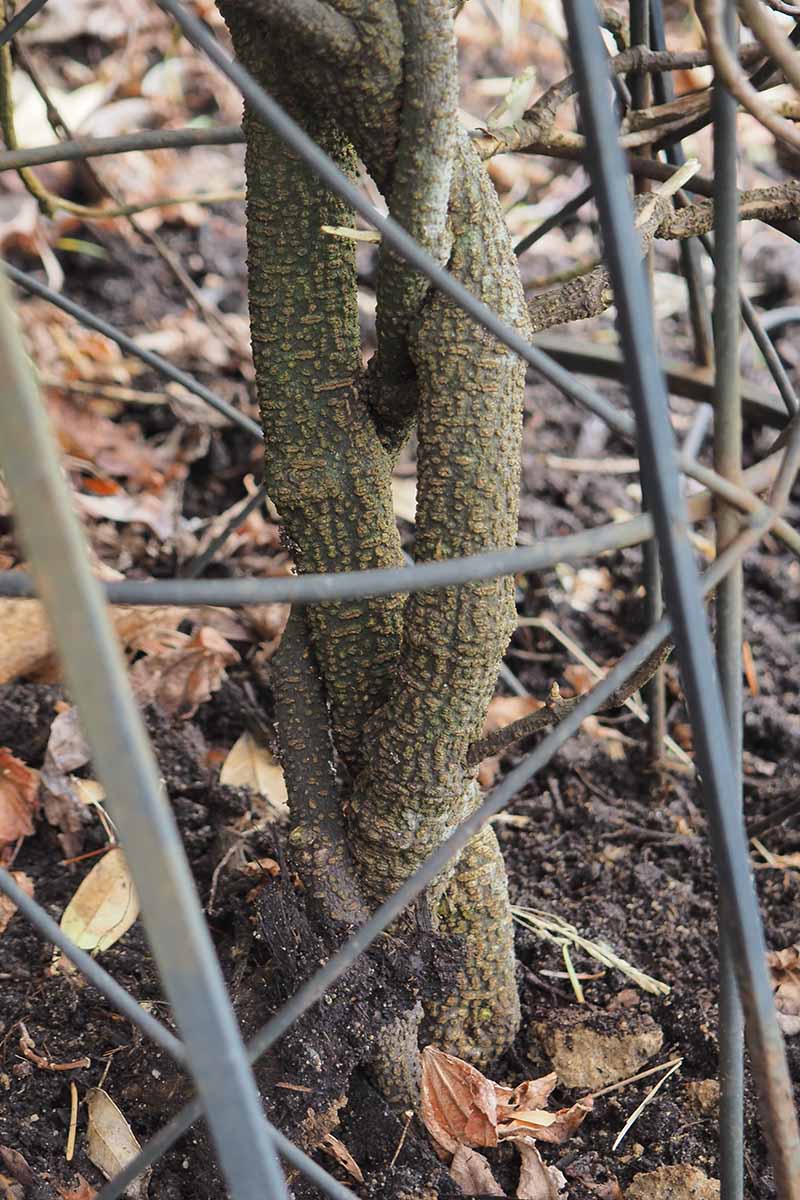
First remove any damaged, dead, or diseased vines using clean, sharp garden shears, and thin out crossed or crowded stems.
Cut back the remaining stems by as much as one-half to two-thirds.
Prune to a side shoot or flowering spur to encourage new growth on the remaining stems and prompt new shoots to emerge from the base.
Cut stems diagonally just above a set of leaves or buds.
Care After Pruning
When you’ve finished trimming or pruning your star jasmine, water vines deeply to help them recover from shock.
Feeding plants also helps them to recover and promotes new growth.
Apply a two- to four-inch layer of compost over the root zone or use a slow-release fertilizer with a balanced ratio of 10-10-10 NPK.
Fragrant Showy Vines
Star jasmine is an easy-care plant that typically only needs a light touchup to keep looking good.
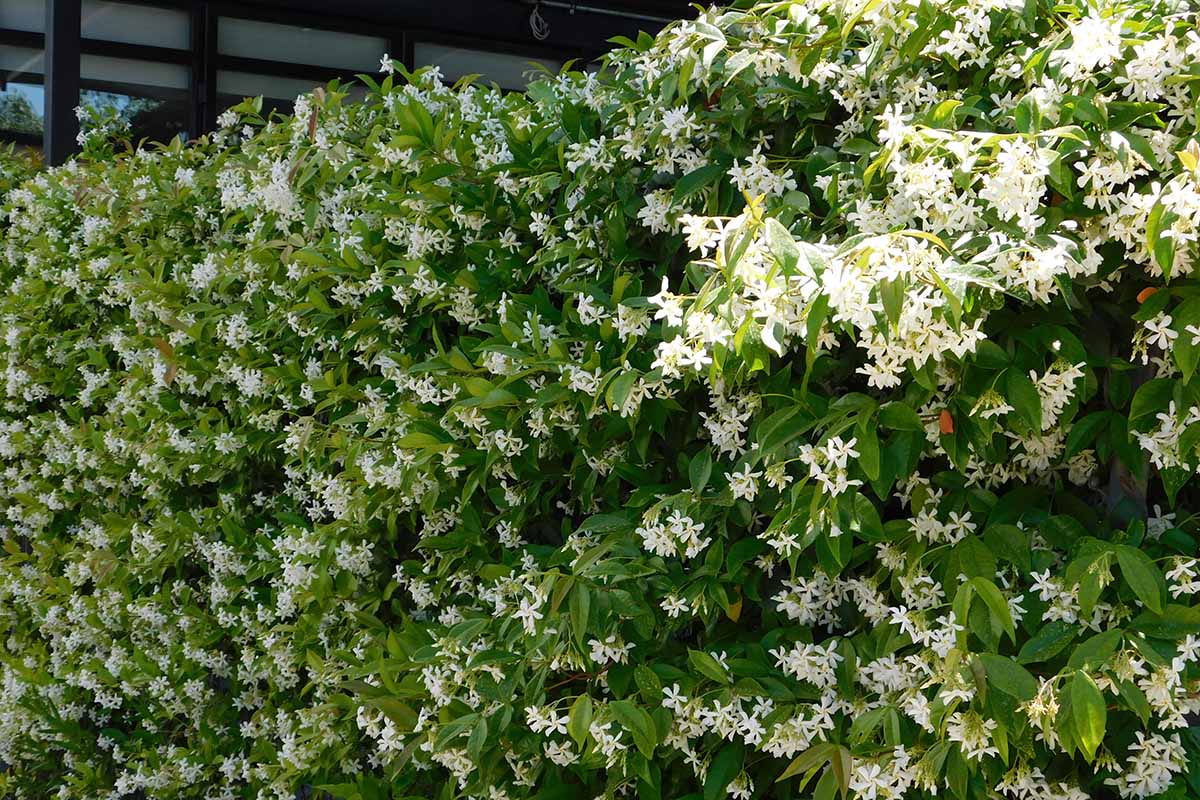
Trim lightly or prune hard in very early spring, or you can wait until after flowering to cut back the plants.
After cutting back, give them a long, deep drink and feed with compost or an all-purpose fertilizer for fragrant, showy vines!
How do you folks use star jasmine in your garden? Let us know in the comments section below.
And for more info on growing jasmine in your garden, be sure to check out these guides next:
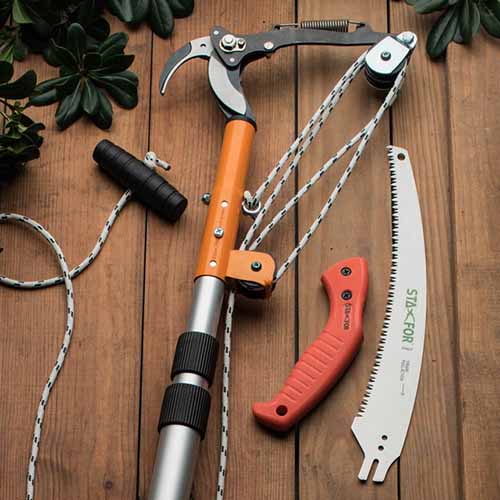
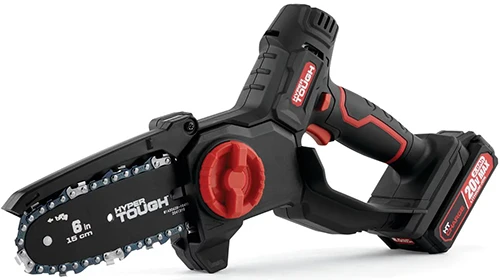
Very nicely done article. I’ll now be hedging my extensive groundcover jasmine along the sidewalk as it is just finishing its bloom cycle. Thankyou for this explanation of proper methods to address my star jasmine.
Thankyou
Have fun hedging your groundcover Kory, and thanks for reading!